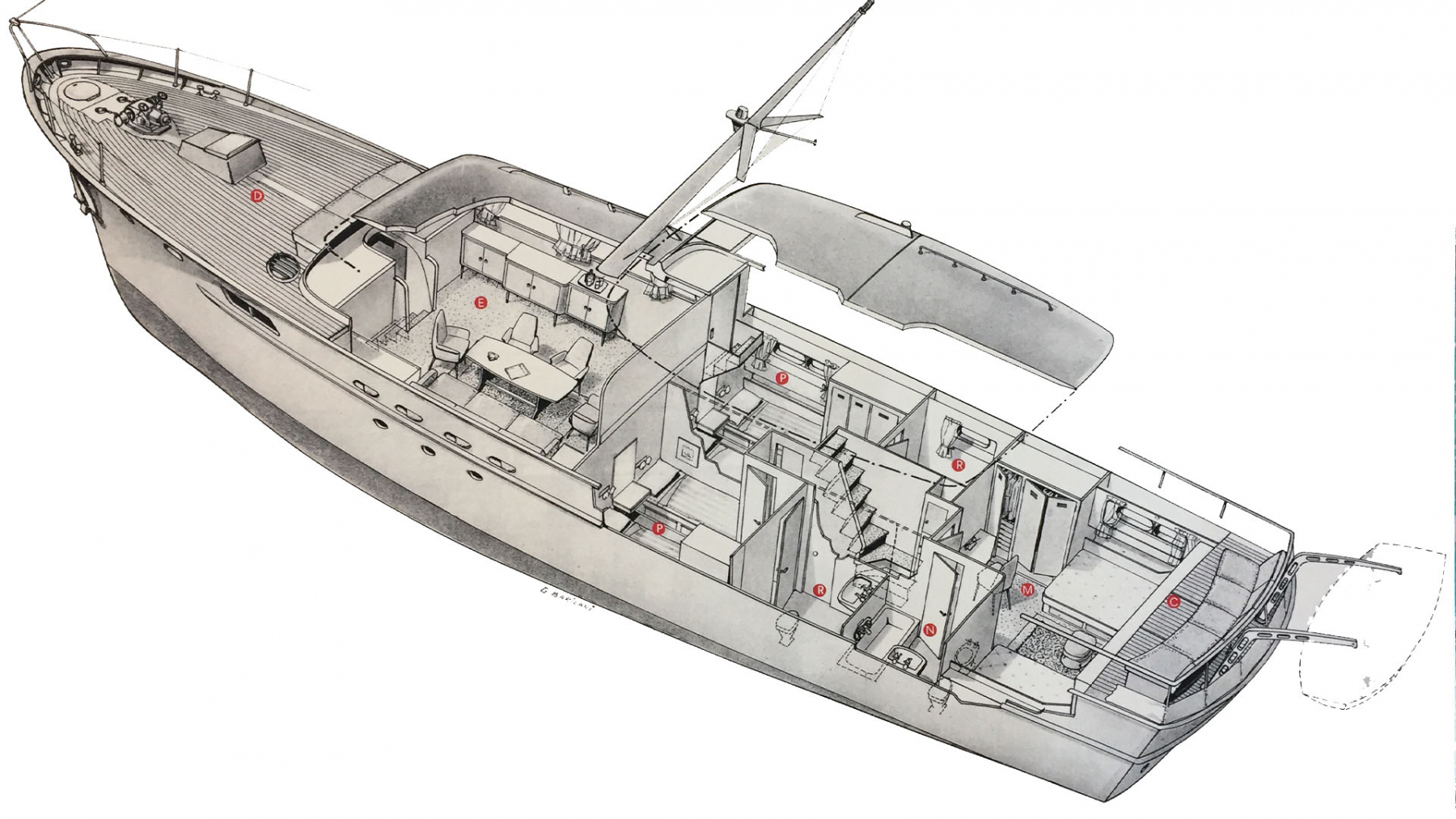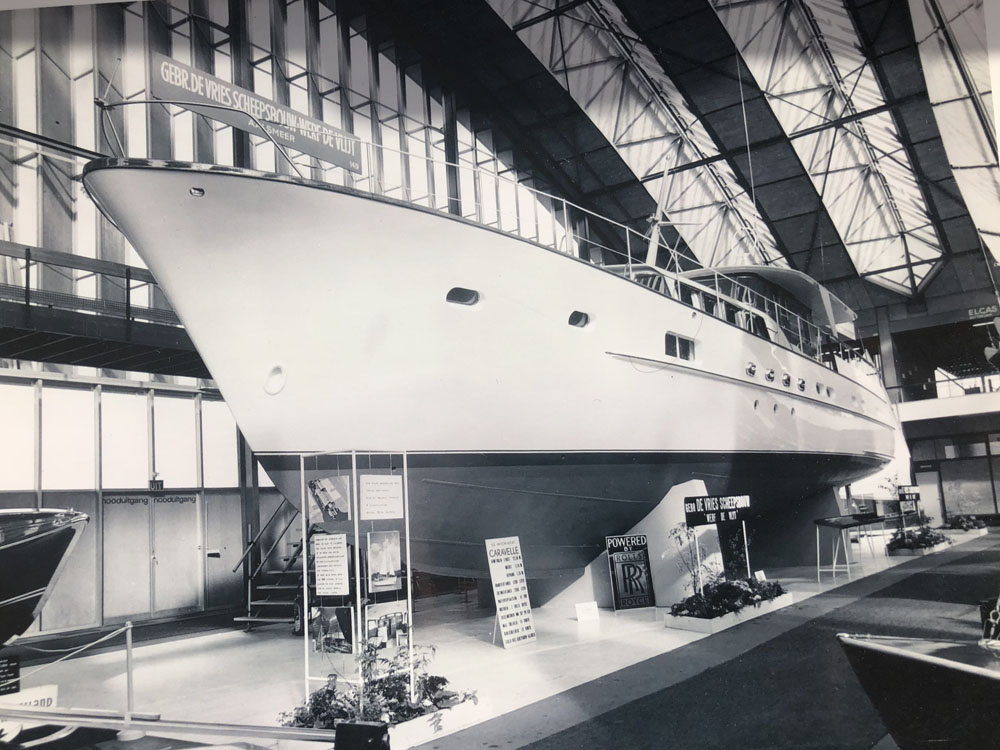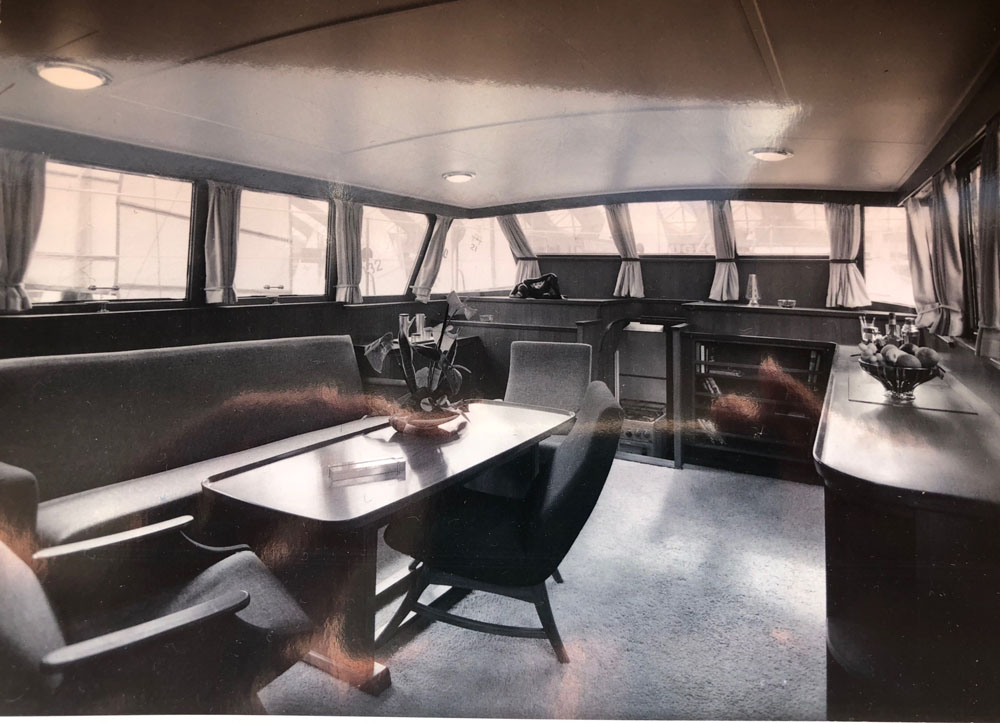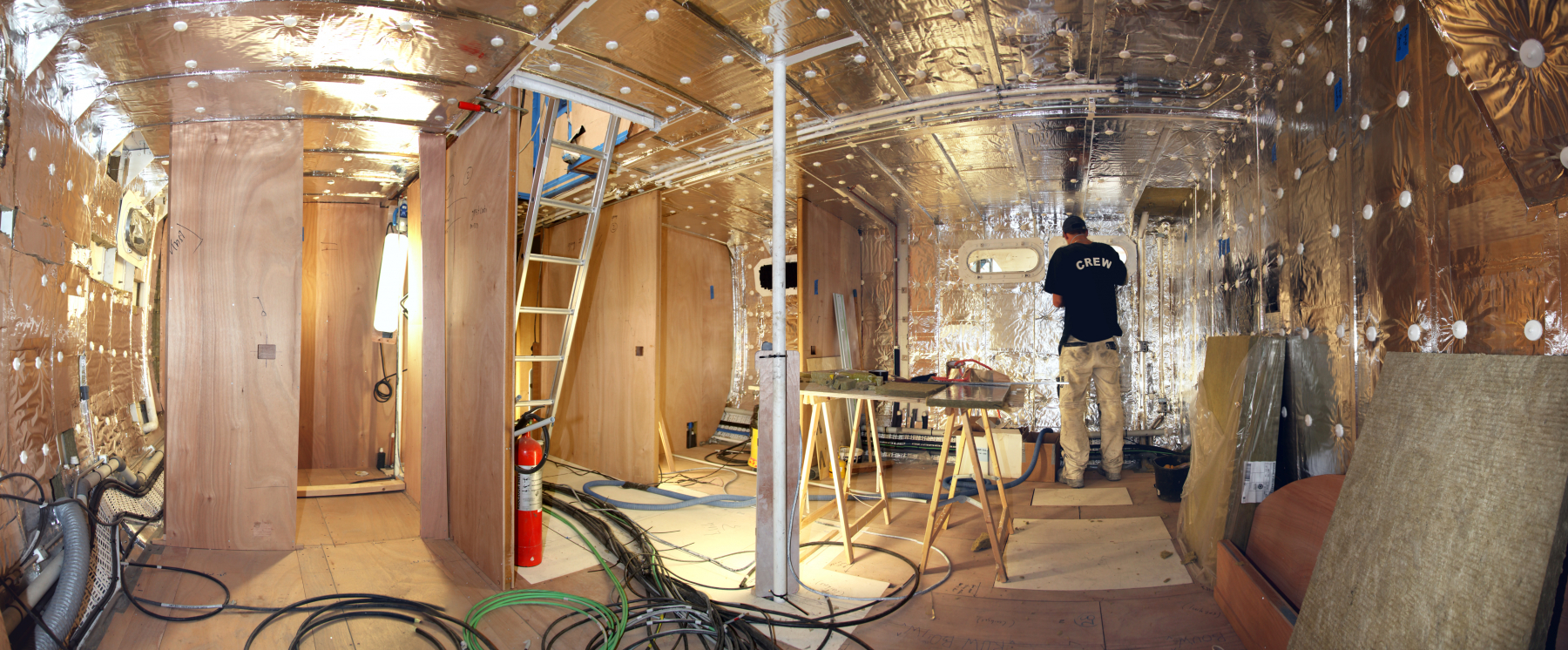HISTORY
DESIGNED IN ITALY
BUILT IN THE NETHERLANDS
Launched in 1964, Serena was the fourth boat in the Caravelle series of steel motor yachts designed by Carlo Riva of Sarnico, Italy, and built by the De Vries Bros. yard in Aalsmeer, the Netherlands. The collaboration between these two family boatyards was initiated by Riva, who was already well-known for sexy runabouts and wanted to offer a product to the yachting market. For the De Vries, Riva’s approach was irresistible on two counts: it gave the Dutch builder a foothold in the Italian market and Riva was willing to assume all the risk on the first boats.
Under Riva's close supervision, the Caravelle models evolved over the 1961-1965 period. Hull No. 4 was the first of Series II, which at 73’10” was slightly longer than earlier models. After a 1964 showing at the Amsterdam Boat Show bearing the name Caravelle, the boat was purchased by German yachtsman Freiederich W. Stukenbroker to cruise on the French Riviera. He named her Serena.
THE LEGEND OF RIVA
Cantiere Riva began in the early 19th Century as a service business, when young Pietro Riva was recruited from Lake Como to Lake Iseo in northern Italy to repair damaged fishing boats. His son Ernesto followed in his footsteps in the latter half of the century, building tourist boats making use of the new internal combustion engine. Ernesto died in a boatyard accident in 1907 and was succeed by his son Serafino, who built increasingly competitive race boats along with high-quality inboard "cruisers" through the late '20s and '30s.
Serafino's son, Carlo, showed talent as a teenager, and despite his father's skepticism, was committed to building wooden boats in series. As a young designer, Riva developed the tapered, convex sterns that the company became known for, and in the early '50s, when his father retired, Carlo shifted out production of race boats to focus on mass production of inboards and outboards for the commercial market.
As the business grew, he developed a partnership with Giorgio Barilani, a graphic designer, and by the 1960s, the name Riva was more than just the name of the world's most popular high-quality runabout—it was synonymous with a sexy new brand of Italian design. Thanks to Carlo's emphasis on quality and style, Riva boats became fashionable among royalty and movie stars, from Prince Rainier to Brigitte Bardot.

CARLO RIVA
FROM RUNABOUT TO YACHT
When Carlo Riva looked for a capable partner to open the company's Yacht Division, he knew the learning curve would be steep—and expensive—and the complexity and cost of building bigger boats might jeopardize his company's reputation and financial well-being. Riva's options for an Italian partner were limited, so he looked to northern Europe instead. There he was introduced by a client and friend, the brewer Freddy Heineken, to De Vries Bros., one of the leading builders of steel motor yachts. The result was a collaboration between Carlo and the De Vries family. The Caravelle series was produced with the Riva-De Vries trademark. Interiors and superstructures were by Riva and Giorgio Barilani. Heineken bought the second boat in the series.

According to Carlo:
“I was in London, at the boat show, with my friend Freddy Heineken [and] ...expressed to him my desire to build larger yachts, in steel. Freddy immediately invited me come visit him in his home country, Holland, where there were yards who obviously specialize in metal construction of yachts and ships…”
“I met with De Vries at the shipyard. We were both immediately excited about the project and [he] then came to visit my shipyard in Sarnico…
“The agreement was...concluded that the yachts would be built in Holland, but controlled myself. My company would then sell them. I assumed all the financial risks of the venture and would only offer my prospective clients a boat of impeccable quality...
“I have very fond memories of my association with the De Vries family. I designed those yachts completely from my own imagination and drew them with my own hand.”
Riva interview excerpt; 2011 Invictus
FEADSHIP
A NATURAL PARTNERSHIP
The De Vries shipyard was one of three yards that became allied in 1949 as the First Export Association of Dutch Shipbuilders, more commonly known as Feadship. Naval architecture and engineering was provided by De Voogt Naval Architects, also a partner within Feadship. Using its expertise in steel yacht construction, the De Vries yard was a natural partner for Riva, and the Caravelle was the first of several yacht models the partnership conceived and built. By no means did the design stand still over that time, as Carlo Riva, ever the perfectionist, tweaked and modified the Caravelle models, lengthening them and shifting from GM diesel engines to Rolls Royce by the time Serena was built.
SERENA'S 2011 REFIT
HOMAGE TO CARLO RIVA
More than 35 years after launch, a new owner named Rembert Berg returned Serena back to the Netherlands for a major refit at Feadship at the Royal De Vries Scheepsbouw Makkum. The company removed most of the interior to shore up the original structure, replaced her Rolls Royce diesels, and designed a contemporary style for the interior matching the original layouts and Sixties look-and-feel. Given the name “Homage to Carlo Riva,” the styling combined teak panelling with palisander furniture and leather detailing. All soft furnishings feature natural tone on tone colors blending in with the warm browns of the timber. To manage the extensive refit within a budget, Feadship created an apprentice program within the company, bringing in students as carpenters, metal workers, painters and furniture makers and teaching them their craft. Originally estimated at 22,000 man-hours of work, the final tally was 43,000.

THE NEXT CHAPTER
A MATCH FOR DORADE
After searching for seven years for an appropriate mothership for their classic racing yacht, Dorade, owners Matt Brooks and his wife Pam Rorke Levy discovered Serena, which Rembert Berg had put up for sale. "We were not interested in a 'big white motor yacht,'" says Brooks, "and at first we looked for a boat from the same era as Dorade—or even earlier—going as far back as the 1890s. We considered wooden-hulled boats, both motor boats and sailboats, that had the same classic lines and patina as Dorade. Serena was a much newer boat, but in the end she was a good match because both boats are iconic boats by iconic makers."
It was also important that the boat raft up neatly to Dorade with a relatively low freeboard and a lower overall profile that wouldn't interfere with Dorade's rigging. According to Levy, "We went to Palma to see the boat and meet Rem, who insisted we meet in person. He clearly had a deep affection for the boat and wanted to make sure she was in good hands."
In May of 2018 over dinner, Serena was purchased, and within weeks she was packed up and shipped off to the Lauderdale Marine Center in Ft. Lauderdale, Fla.. There, she was fully serviced before her delivery to Newport, R.I., where she was commissioned for the season on July 5 in front of New York Yacht Club's Harbour Court. A few weeks later, she made her debut as Dorade's tender in Maine on the NYYC's Annual Cruise .








































